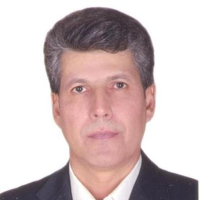Crop Residue and Herbicide Application Effects on Weed Control in No-tillage System under Barley-Cotton-Wheat Rotation
Tillage is one of the most important causes of soil erosion in croplands that affects productivity and inflates the cost of production. Recently, in order to enhance sustainability without compromising land productivity, there has been a growing trend toward conservation agriculture. No-tillage (NT) as one of the components of conservation agriculture is a planting system in which soil dose not disturb and mulch cover remain from previous crop at least in 30%. It has revolutionized agricultural systems because it allows farmers to manage greater amounts of land with reduced energy, labor, and machinery inputs. Minimum tillage systems, such as shallow or surface tillage and direct drilling or no-tillage (NT), increase the degree of soil cover and increase organic matter at the soil surface over time. In specific soil types and climates, this can lead to an improvement of the soil physical condition. Improvement of the biological and physical quality of the surface soil can also help to protect the soil resource against redistribution and erosion. NT cropping systems frequently suffer from weed infestations, especially those of weedy annual grasses. The timing of competition in NT systems may differ from that in conventional systems. Rottenly, a combination of relative crop yield and specific input costs (i.e., fertilizer and pesticide) are considered as key determinants to the profitability of adopting minimum tillage systems. Our understanding of weed community dynamics and suppression in NT systems is limited, particularly in long-term rotations. Winter annuals, biennials, and perennials are typically associated with NT systems because of their affinity for non-disturbed soil environments. The vertical distribution of viable weed seeds in the soil profile is shallower in NT systems than in intensive-tillage systems. Weed seeds remaining at or near the surface are more susceptible to predation and disease, which may deplete the seed bank over time. NT is dependent on herbicides because of the elimination of tillage for control of weeds.
A three-year field study was conducted to assess the efficacy of weed control in barley-cotton-wheat rotation under no-tillage system in the agricultural research station of Gonabad, Khorasan-Razavi province, Iran over 2014-2016 seasons. The experiment was arranged in a split plot design based on completely randomized block design with three replications. The main plot was crop residue (left on the ground from previous crop in rotation) in three levels;no residue, 30% residue (1200 kg ha-1) and 60% residue (2400 kg ha-1. The subplot was weed control methods in three levels; (weed infest control, weed free control and chemical control. In chemical control treatment, we applied 2,4-D+ MCPA at dose of 1.0125 lit a.i. ha-1 for controlling broad-leaved weeds and pinoxaden (Axial® 10% EC) at dose of 67.5 g a.i. ha-1 for controlling narrow-leaved weeds in barley and wheat, and trifluxysulfuron-sodium (Envoke® 75% WG) at dose of 11.25 g a.i. ha-1 in cotton. For barley, the wheat residues were left from wheat planted a year before in rotation. Plots size were 3m×10m. Barley (var. Nosrat), cotton (var. Khordad) and wheat (var. Parsi) planted by direct seeding equipment with no tillage.
Cardaria draba and Malcolmia africana in barley, Acroptylon repense and Alhagi pseudalhagi in cotton and A. repense in wheat were dominant weed species from the beginning to the end of the study. Results showed a remarkable change in weed flora from mostly annual weeds (like M. africana) to perennials (like A. repense), because of the fact that no tillage system was deployed. For barley, application of 2, 4-D + MCPA significantly decreased weed dry weight and density compare to the weedy check. Residues showed no significant effect on biological and seed yield of barley. For cotton, the effect of trifluxysulfuron-sodium was significant on decreasing the density and dry weight of A. repense 30 days after spraying and in the end of the season as well. Effect of residue levels (30% or 60%) was not significant on the density and dry matter of A. repense in the early and at the end of the season as well. Trifluxysulfuron-sodium significantly increased cotton dry weight compare to the weedy control. Dry weight of cotton in hand weeding control and application of trifluxysulfuron-sodium treatments were significantly higher than that of weedy control. Residues showed no significant effect on cotton boll dry weight. For wheat, application of 2, 4-D + MCPA significantly decreased weed dry weight and density compared to the weedy control. Residues showed no significant effect on biological and seed yield of wheat.
No-tillage system by at least 30% (1200 kg ha-1) up to 60% (2400 kg ha-1) of residues spread on the soil surface can be recommended to be deployed besides a suitable chemical weed control management in barley-cotton-wheat rotation in semi-arid climate conditions to enjoy the benefits of no tillage system of agriculture.
- حق عضویت دریافتی صرف حمایت از نشریات عضو و نگهداری، تکمیل و توسعه مگیران میشود.
- پرداخت حق اشتراک و دانلود مقالات اجازه بازنشر آن در سایر رسانههای چاپی و دیجیتال را به کاربر نمیدهد.



